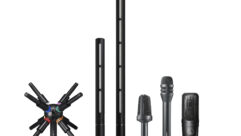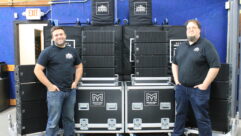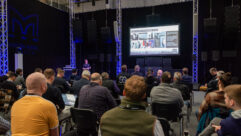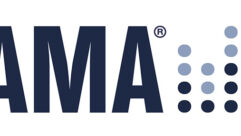
Audio Bolsters Downtown Events
Great Falls, MT, adds portable wireless speaker clusters to Central Avenue to enhance outdoor events with unobtrusive yet high-quality audio.
CHALLENGE: Devise a solution capable of providing high-quality audio across more than five city blocks without incurring the costs of miles of wire and setup fees associated with temporary systems.
SOLUTION: Create a centralized head-end unit that wirelessly sends audio signals to 12 installed speaker modules hanging on antique light poles.
THE CHARMING Central Avenue in downtown Great Falls, MT, resembles an old fashioned main street from a past generation. In fact, most of the buildings on the Avenue haven’t physically changed since they were built in the 1910s and 1920s. But for the 57,000 residents of Great Falls, Central Avenue still serves as a bustling meeting place, entertainment venue, and center of commerce.
Held every May on Central Avenue in Great Falls, MT, the Cruisin’ the Drag car show was the first event to use the new wireless sound system featuring a Listen Technologies LT-800-215 transmitter, LR-100-216 receivers, and JBL Control 28 loudspeakers. The system provides high-quality, uniform sound over an area that spans more than five blocks.
Central Avenue hosts numerous events during the year, including the Christmas Stroll holiday event every December, Cruisin’ the Drag car show each May, and the annual Sidewalk Sale in July. The Great Falls Business Improvement District (BID), a downtown revitalization board appointed by City Hall and funded by property taxes from downtown business owners, adds atmosphere to most of the city’s outdoor events by playing appropriate background music, arranging live radio broadcasts, or setting up a stage for live music.
The problem was that every time Great Falls BID wanted to add audio to one of its yearly events, it cost them about $3,000 to hire a company to set up a temporary audio system. The temporary setups typically consisted of speakers mounted on tripods on one side of Central Avenue connected by long lengths of cabling. Not only did these systems require unsightly cable to be strewn up and down the sidewalks, but the sound quality wasn’t very good. “The speakers were just going up one side of the Avenue, so when you were near them, it was just way too loud,” says Greg Madsen, president of the Great Falls BID.
After consulting with area electronics retailers, Great Falls BID turned to Mark Pritchard, owner of local AV integration company Mountain Sound/Project, to create a system that would provide a cheaper and more effective way to bring high-quality audio to the events on Central Avenue.
Going wireless
With Great Falls temperatures ranging from 105 degrees F in the summer to -35 degrees in the winter, Pritchard knew that the components of a permanently installed, wired system would likely need to be replaced every two years, which would require extensive labor and cost. And for a permanently installed system, the BID would need permission from numerous property owners on Central Avenue to run conduit and wires through their properties to reach the speakers.
PROTECTING AV COMPONENTS
To reduce costs in the Great Falls, MT, Central Avenue project, it was critical for local AV integrator Mountain Sound/Project to protect components in receiver/amplifier modules from outdoor weather conditions. The company turned to Ankora, MN-based electrical products enclosure and protection provider Hoffman for a solution. Mountain Sound/Project used 12 Hoffman A18R126 galvanized steel, Type-3R enclosures to protect amplifiers and receivers that connect the speaker clusters to the head-end unit.
According to Hoffman, the A18R126 is specifically designed to be used as a wiring box or junction box, and provide protection in outdoor installations against rain, sleet, and snow, or indoors against dripping water. To meet the company’s weather resistance requirements, all Type-3R enclosures feature UL 1332-rated, Category DTV02 weather-resistant paint, stainless hardware, drainage holes in the bottom of the box, and overlapping construction (a drip shield in this case).
The enclosures are available in 12-, 14-, or 16-gauge galvanized steel, and feature seam-free sides. For security, the Hoffman enclosures also offer a provision for padlocking.
After considering several different ideas, Mountain Sound/Project came up with a solution that called for designing a wireless system with a head-end unit to transmit audio sources to portable speaker clusters and receiver modules placed along Central Avenue. Pritchard conferred with some of his colleagues, who recommended a Listen Technologies system.
“Listen sent me some demos, and I tried them out,” Pritchard says. “I set up a transmitter in my shop, and took a receiver and a speaker and drove about five blocks away. It was going through houses and buildings, and I still got the reception just fine. So, I was pretty sold on Listen.”
Pritchard chose the Listen LT-800-215 transmitter and LA-326 antenna kit for the head-end transmission unit. The head-end is enclosed in a Lowell L70-3 118-space table-top rack, which houses the head-end’s sources. The head-end usually sits in the second floor of a men’s store in the middle of Central Avenue, but can also be moved onto the street for use in live radio broadcasts.
“One of the big sponsors for Cruisin’ the Drag is the Oldie Goldie radio station,” Pritchard says. “They play all the old hot rod songs, and that was a big hit. It added so much.”
Also included in the Lowell table-top rack is a Denon Pro DCM-280P CD changer, which is used during Christmas Stroll events to play seasonal music, a Tascam cassette deck, a Rolls RS79B AM/FM tuner, and an Audio-Technica ATW-1452 handheld wireless mic system. The wireless mic system allows an emcee or radio host to move around the avenue and talk to people during the events. All of these sources plug into a Peavey Architectural Acoustics MMA 800T rack-mount modular mixer, which then outputs through the Listen LT-800-215 transmitter.
When the head-end is in the second floor downtown shop, it sends its signal through a permanently-installed Listen LA-107 ground plane antenna, which extends from the balcony on the front of the building out onto the railing via a fabricated steel arm that hangs approximately 4 feet over Central Avenue. The Listen transmitter has a range of 3,000 feet, which is more than enough range for the farthest receiver module.
The team’s next challenge was to find a place to mount the speaker clusters, so they wouldn’t duplicate the problems associated with the tripods. “We have these old street lamps that have electrical outlets on top,” Great Falls BID’s Madsen says. “We thought if we used that power, and somehow had speakers up in the lamp, we could do something that way.”
Distributing the sound
The area that needed to be covered on Central Avenue was more than five city blocks long (about 2,400 feet), and sound needed to be evenly spaced on both sides of the streets. To meet these requirements, Pritchard and Mountain Sound/Project AV Technicians David Hicks and Joe England constructed 12 custom speaker clusters and 12 amplifier/receiver modules to adequately cover the space.
“The clusters are positioned two per block on opposing sides toward the end of each block,” Pritchard says. “When you cross the street, the distance between modules across the street is about the same as the distance between the modules on a given block.”
For the speaker clusters, Mountain Sound/Project used two JBL Control 28 speakers set at 90-degree angles and tilted slightly downward. The speakers are positioned between two of the lamppost’s arms facing Central Avenue. To hold the speaker cluster in place, Mountain Sound/Project fabricated custom steel brackets that secure the speaker clusters to the lampposts.
Next the team was tasked with devising a solution to house the amplifiers and receivers, which would need to withstand the weather in all four seasons. The team’s solution consisted of 12 Hoffman 16-gauge steel, weather-resistant boxes, which house all of the components of each receiver module, and hang on the back of the lampposts opposite the speakers (see sidebar). Each module contains a Stewart Audio PA100B dual-channel amplifier with 50 W per channel, a Listen Technologies LR-100-216 receiver, and a 2-inch DC fan. The fan is switchable, so it can be turned on or off, depending on the season. The team also installed a Listen LA-124 helical antenna, which receives the signal from the head-end, at the top of each lamppost.
Quick setup
Mountain Sound/Project also helped Great Falls BID install and dismantle the 12 speaker clusters and amplifier modules for its first three events until BID volunteers learned how to do it themselves. “A number of people can do it now,” Madsen says. “It goes pretty fast. We can do it in an hour.”
FOR MORE INFORMATION
- Audio-Technicawww.audio-technica.com
- Denon Prowww.denon.com
- Hoffmanwww.hoffmanonline.com
- JBLwww.jblpro.com
- Listen Technologieswww.listentech.com
- Lowell Manufacturingwww.lowellmfg.com
- Peaveywww.peavey.com
- Rollswww.rolls.com
- Stewart Audiowww.stewartaudio.com
- Tascamwww.tascam.com
The new wireless sound system has been a huge success in providing quality, uniform sound for Central Avenue. “The way it was designed with alternating speakers across the avenue, you can have background music and you can’t even tell where the sound is coming from,” Madsen says. “It really fills the canyon of buildings with sound.”
Another advantage of the system is its flexibility. Now, Great Falls BID can use its sound system wherever and whenever it desires. “It’s mobile, so we can actually take the head-end unit and a couple of the speakers to a park downtown for other events,” Madsen says. “It’s functional and usable.”
The complete solution cost approximately $32,190, including equipment and labor for each of the 12 speaker cluster/amplifier modules and the head-end. Although the cost came in higher than Great Falls BID’s original budget of $20,000, Madsen says the end-result and ability to add audio to more events in the future was worth it. “Even if we used it only twice a year for five years, we’d pay for it,” Madsen says.
Paul Kramer is associate editor of Pro AV. He can be reached at [email protected].










